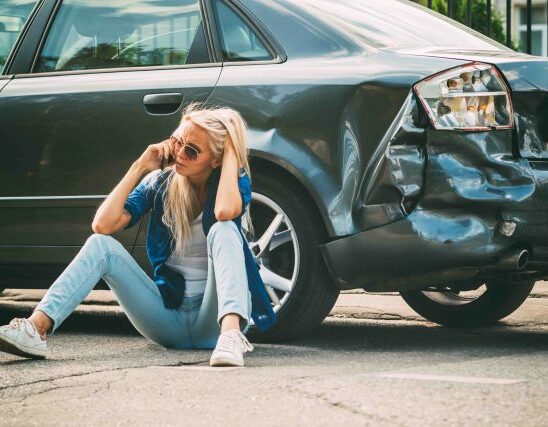Currently, liability for driverless car accidents and injuries lies with the person behind the wheel of the vehicle, because most self-driving vehicles alert the driver to disengage autonomous mode and take control of the vehicle when unsafe conditions are detected.
Liability for Driverless Car Crashes
Autonomous vehicles offer many safety features, but they are not completely void of accidents. Although the benefits of self-driving cars far outweigh the accident risks, all types of accidents can and do occur. When they happen, one key issue that drivers face is who is liable for the accident and who has to pay for property damages and personal injuries caused by the crash.
Driverless cars raise concerns about accident liability. When accidents occur with human drivers, fault and liability are established through an investigation of the accident scene, talking to witnesses, police reports, and the details of the crash. If it is established that a driver is impaired by drugs or alcohol, or distracted behind the wheel, fault and liability are usually linked to that driver. Driverless cars can be prone to a variety of errors because the technology is new and it must interact with other human drivers which are often unpredictable.
Implementing new autonomous technology takes time, and many interactions with human drivers are still being worked out. Currently, accident rates for self-driving cars are higher than car accidents with human drivers, but they tend to be less severe. For every one million miles driven, humans have approximately 4.1 car crashes compared to self-driving cars with 9.1 crashes. In a recent safety study, results show that humans are at fault for the vast majority of car accidents. In 38 accidents involving driverless cars, studies show that all but one were caused by human errors.
Establishing Fault and Liability
In the United States, liability for car accidents breaks down into 3 different categories – fault, no-fault, and comparative fault. Currently, the majority of states are fault states. In all states, these insurance systems determine accident liability.
Fault Insurance Systems
Under “fault” insurance systems, the driver or drivers found to be responsible for a car accident are held liable for property damages and personal injuries. In cases where there is more than one driver found responsible, fault is assigned by percentages. For instance, one driver may be liable for 60%, while another may be liable for 40%. In a majority of car accidents, fault is rarely due 100% to one driver’s actions unless the driver was intoxicated, overly medicated, distracted, or drowsy while driving. Under fault insurance systems, the responsible party for the accident bears the burden of compensation for property damages and injuries.
No-Fault Insurance Systems
Under “no-fault” insurance systems, responsibility for a car accident is disregarded. Instead, insurance companies are required to pay for their policy holder’s damages, regardless of who is at fault for the accident. When any type of car accident occurs, the insurance company is expected to pay their insured drivers for accident and injury expenses. Under no-fault insurance systems, the insurance company must compensate injury victims.
Comparative Fault Insurance Systems
Indiana operates under a “comparative fault” insurance system, which means that responsibility for car accidents and injuries is determined by what percentage a person plays in the accident. For example, if a driver is found to be 40% responsible for an accident, he or she may only receive 60% of the compensation awarded for property damages and personal injuries. If a driver is found to be more than 50% responsible, he or she will receive no compensation. When complex issues arise with comparative fault claims, an Indiana accident lawyer can be helpful with proving fault.
Although driverless vehicles are likely to be the wave of the future, there are not yet many on the road. Some vehicles have autopilot features but are not fully self-driving cars that don’t require a driver behind the wheel. Currently, most autonomous vehicles require a human driver behind the wheel who can take over the vehicle when an alert is sounded or something malfunctions.
At this stage of self-driving technology, the driver is still generally responsible for accidents that occur while he or she is behind the wheel. Most driverless vehicles signal an alert to the driver to disengage autopilot mode and take control of the vehicle when driving conditions are unsafe or a crash is imminent. Unfortunately, accident lawyers often see driverless vehicle crashes due to drivers who disregard alert warnings. Until this changes, and autonomous cars do not require input from someone behind the wheel, liability for driverless car crashes is likely to be assigned to the driver. However, in some cases, car manufacturers may be held liable as a third party in a driverless accident if defective technology causes a crash.

